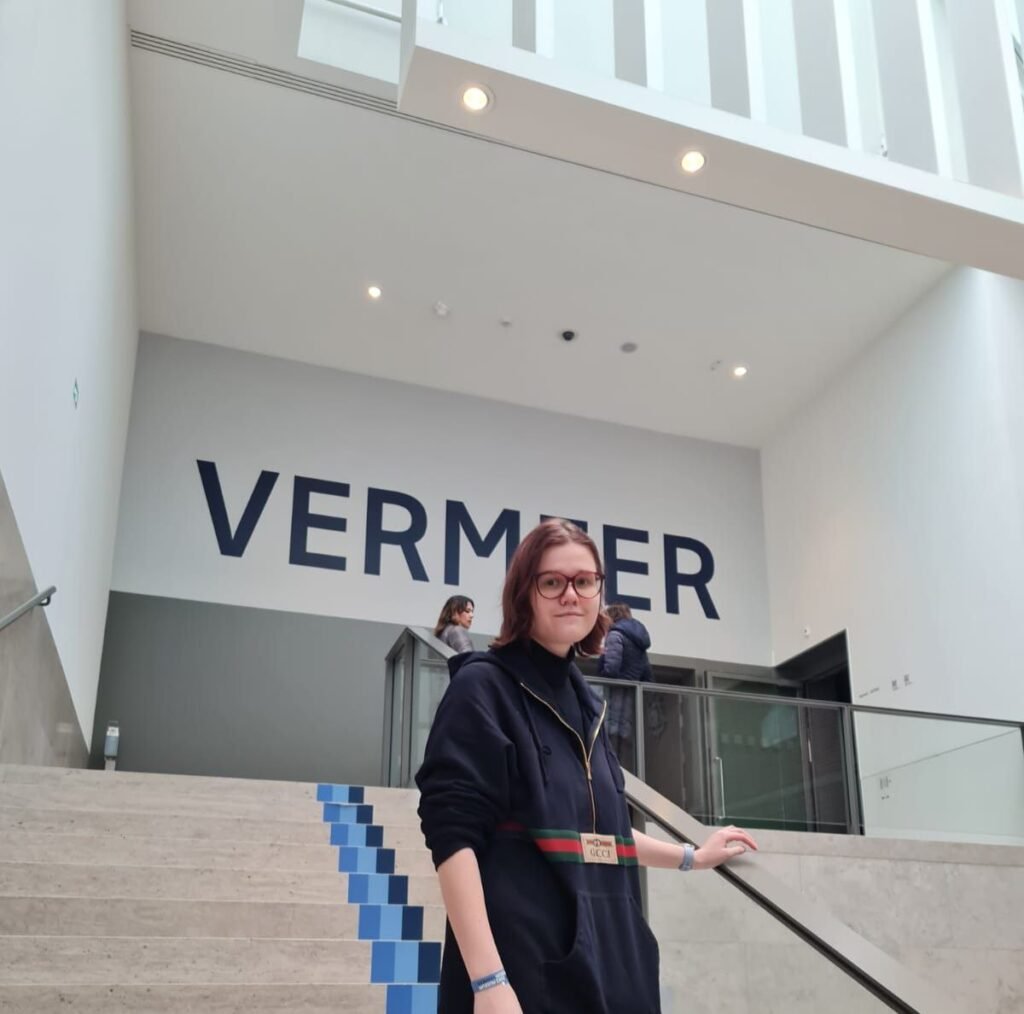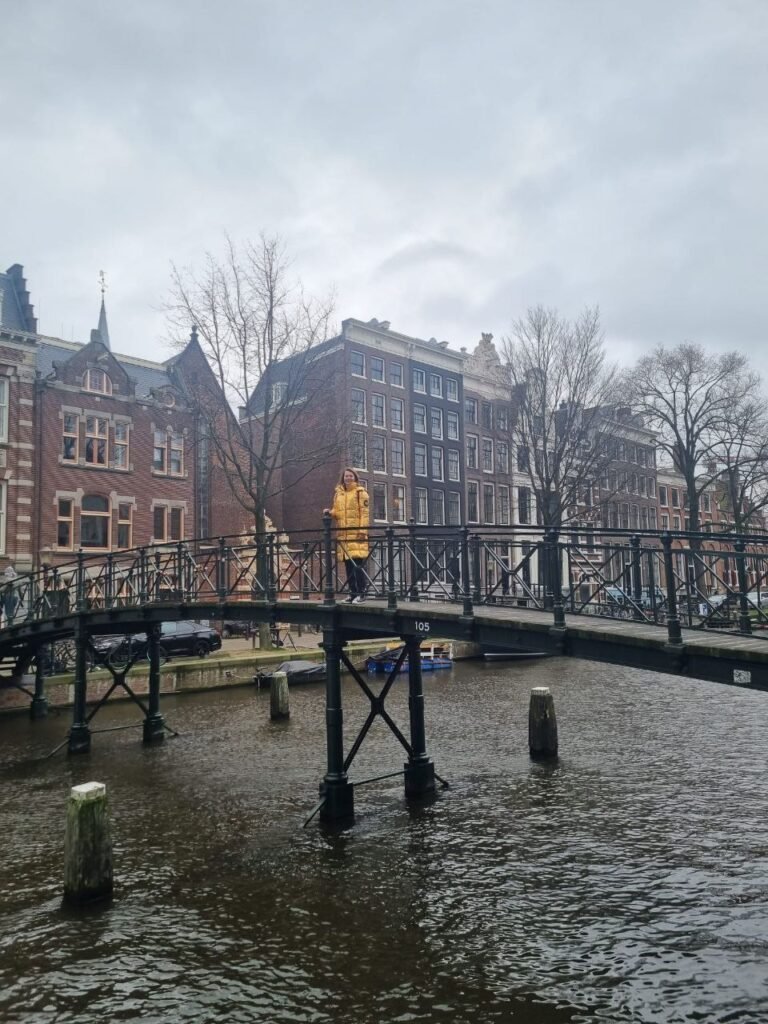The Rijksmuseum’s halls were hushed despite the crowds. We moved slowly through the galleries, pilgrims paying homage to a master of light and silence. The Vermeer exhibition—the largest retrospective of his work ever assembled—has drawn visitors from across the world, all of us seeking something in these luminous, enigmatic canvases.

What strikes me most about Vermeer’s paintings is their peculiar temporality. They depict not dramatic moments but suspended intervals—a woman reading a letter, a musician pausing before playing, light falling through a window onto a table. Time in these works feels neither arrested nor flowing, but held in a state of perfect equilibrium. The subjects exist in a perpetual present tense, engaged in actions that have no urgency, no clear beginning or end.
Standing before “Woman Reading a Letter,” I found myself mesmerized by the quality of attention Vermeer captures—the absolute absorption of the woman in her correspondence, oblivious to being observed. There’s an intimacy to these scenes that feels almost transgressive, as if we’ve been granted access to profoundly private moments. Yet there’s nothing voyeuristic about the gaze; it’s characterized instead by a kind of reverent noticing, an appreciation for the extraordinary within ordinary experience.
The exhibition has been arranged thematically rather than chronologically, emphasizing connections between works often separated by museum collections. In one room, all of Vermeer’s paintings featuring musical instruments were displayed together, creating a visual symphony of forms and postures. In another, his depictions of women engaged in domestic tasks revealed subtle variations on similar compositions—the same elements rearranged like phrases in a musical motif.
What resonated most deeply with my own creative aspirations was Vermeer’s mastery of atmosphere. Each painting establishes its own complete microclimate of mood and feeling. The quality of light—often entering from a window at left, illuminating some surfaces while leaving others in shadow—creates an emotional tonality as precise as any written description. I found myself thinking about how to achieve something similar in prose: how to use sensory detail, pacing, and carefully chosen moments to establish an atmosphere that envelops the reader completely.
This contemplation seems particularly relevant as I develop material for my new novel. While “Life on the Island” and “Туманные блики” were relatively contained narratives, the project I’m working on now—tentatively titled “Shattered Horizons of Tarveran”—requires a more expansive approach. Set in a near-future metropolis experiencing inexplicable fractures in physical reality, it interweaves corporate intrigue with more philosophical questions about perception and truth.
The challenge lies in balancing the novel’s speculative elements with the intimate human experiences at its core. Vermeer’s example offers a valuable lesson: even when depicting the extraordinary (his mastery of light effects was revolutionary for his time), he remains grounded in careful observation of everyday life. His paintings remind us that the fantastical becomes most compelling when it’s tethered to recognizable human experience.
In the quiet spaces between exhibition rooms, I found myself jotting notes for scenes and character moments. One in particular took shape as I contemplated “Girl with a Pearl Earring”—a pivotal conversation between two characters that would unfold in a corporate office after hours, the city’s fractured skyline visible through the window, the office itself illuminated only by emergency lighting. The contrast between institutional space and intimate revelation, between technological crisis and personal vulnerability, suddenly crystallized as I stood before Vermeer’s most famous portrait.
Amsterdam itself provided additional inspiration beyond the museum walls. The city’s distinctive architecture—narrow canal houses with their varied gables, bridges arching over dark water—creates a sense of vertically compressed space that somehow feels both confined and expansive. Walking along the Herengracht at dusk, watching lights come on in windows, glimpsing fragments of interior lives, I found myself collecting images and impressions that might find their way into Tarveran’s layered urban landscape.

The journey back to London offered time for reflection. What stays with me most vividly from Vermeer’s work is his profound attentiveness—his willingness to observe ordinary moments with extraordinary care. In an age of constant distraction and acceleration, this quality feels increasingly rare and precious. Perhaps this is what draws so many of us to his paintings: the promise that if we pay close enough attention, the everyday world reveals itself as miraculous.
As I return to my novel draft, I carry this lesson with me. Even in depicting a fantastical city experiencing reality-bending phenomena, the heart of the story lies in carefully observed human moments—a gesture between colleagues, a conversation that shifts the balance of power, the quality of light in a room where a crucial decision is made. Vermeer, master of domestic interiors, has something to teach even those of us who write about shattered horizons.
“In all chaos there is a cosmos, in all disorder a secret order.” (Jung’s observation seems particularly apt both for Vermeer’s precisely ordered compositions and for the structured chaos of my fictional Tarveran)
